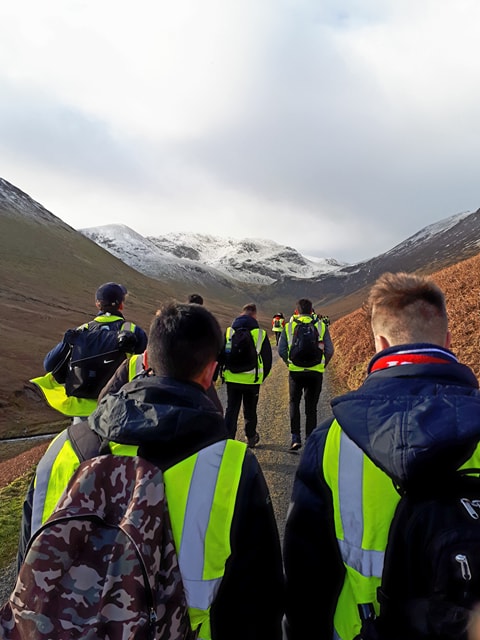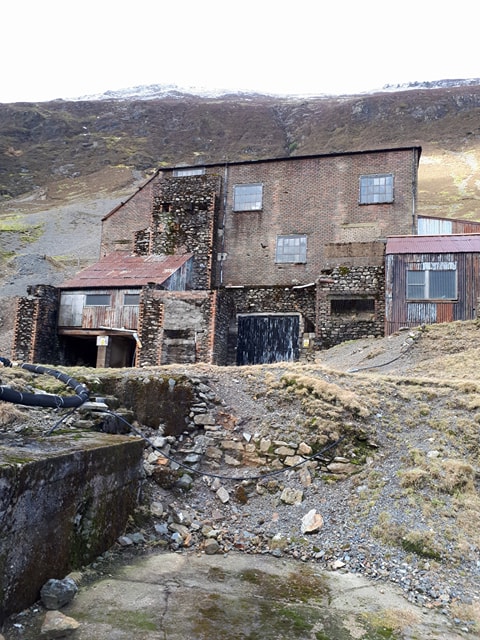At the start of February, undergraduate Earth Sciences and Environmental Sciences students threw on their woolly hats and high vis vests and travelled to the Lake District to assess the treatment of metal contaminated water, drained from the area surrounding the disused mine at Force Crag.

Students on route to the Force Crag field site

Disused mine at Force Crag, Lake District
The mine site has an active bioremediation scheme for metal contamination. Water drained from the mine site, which is high in zinc enters two artificial vertical flow ponds, containing sulphur reducing bacteria which immobilize zinc from the water through bacterial sulphate reduction. Students were asked to test the pH, Eh, conductivity and alkalinity of water entering the bioremediation scheme and water leaving the bioremediation scheme.

Students testing the alkalinity of water entering the bioremediation scheme

Students armed with water testing kits downstream of the two artificial vertical flow ponds
Students also got the opportunity to test the zinc content of water entering and leaving the bioremediation scheme using zinc testing field kits. The zinc content of water was inferred based on the colour produced by mixing a 20ml water sample with two chemical reagents. When mixed with the two reagents, water which has a high concentration of zinc produces a purple-blue solution. Whereas, water which has a low concentration of zinc produces a red-orange solution.

Water samples analysed in the field using zinc testing kits. On the left is a sample collected from water entering the bioremediation scheme which has a high zinc content and on the right is a sample collected from water leaving the bioremediation scheme which has a low zinc content
Once back at Newcastle University, students will use the data collected during this field trip in a computer practical class, where the statistical software package Minitab will be used along with ANOVA to analyse the data.
This field trip is just once example of the range of field trips undertaken by undergraduate Earth Sciences and Environmental Sciences students studying at Newcastle University.
Stay tuned to the Geosciences Group blog for updates on future fieldwork conducted by Newcastle University Geosciences undergraduate and postgraduate students.
